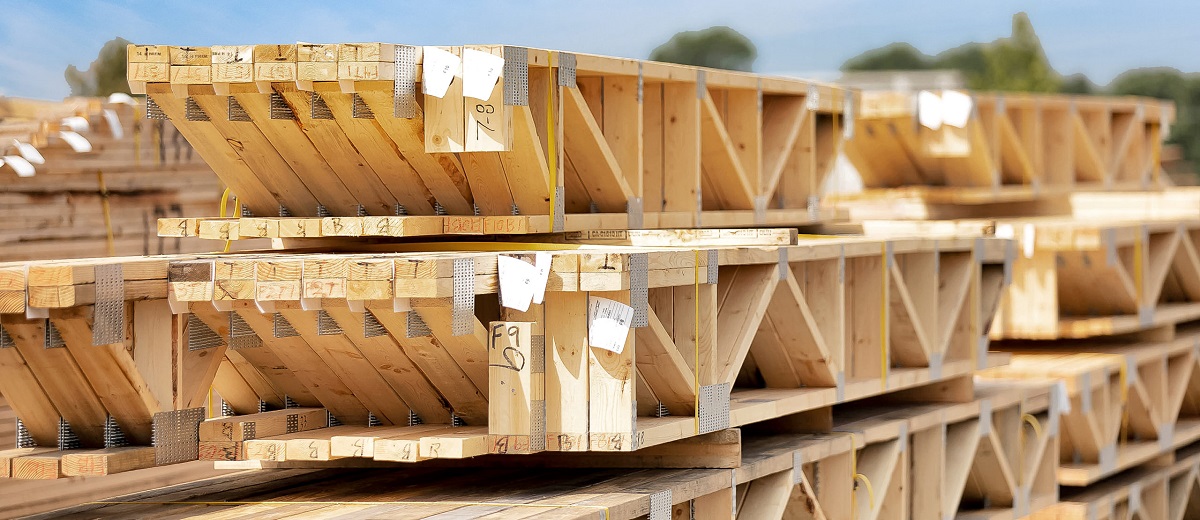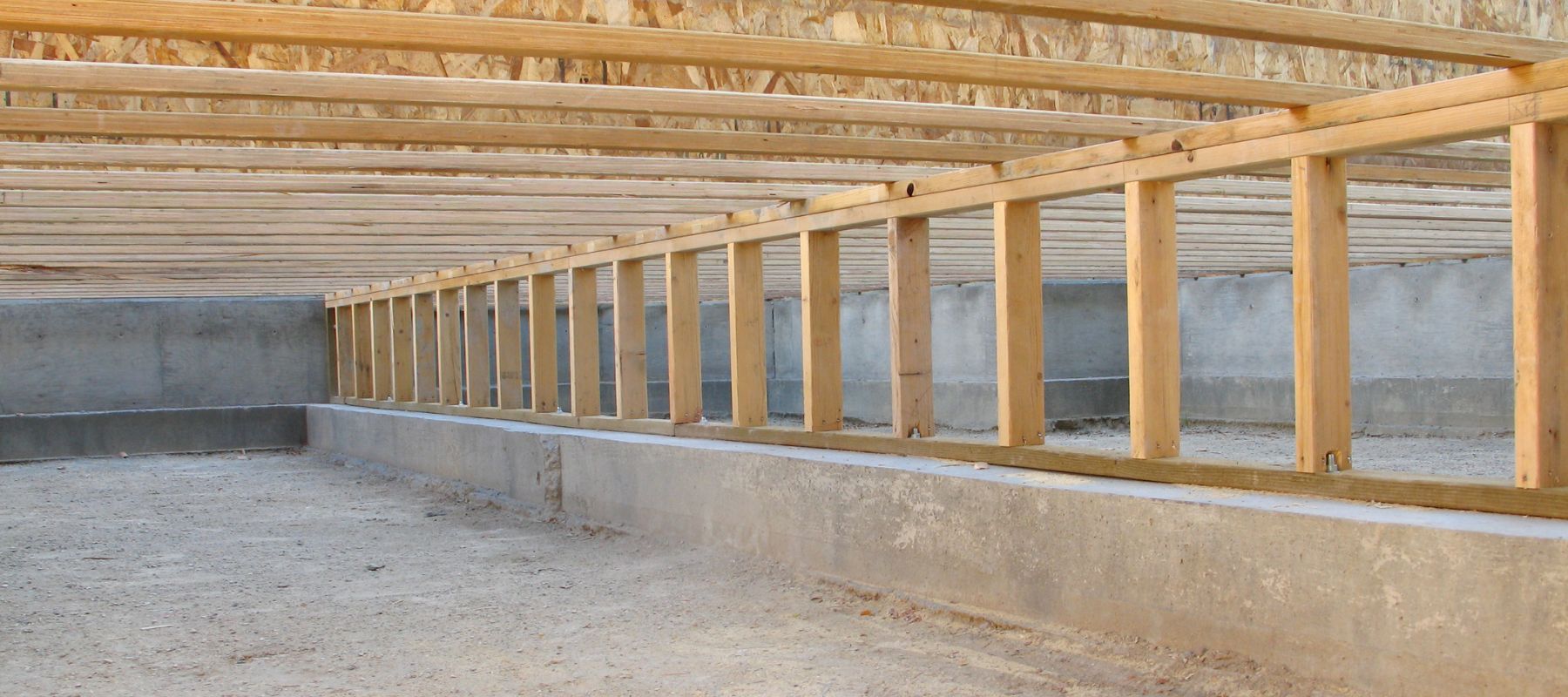

Articles
What Is A Threshing Floor
Modified: December 7, 2023
Discover the significance of the threshing floor in biblical times and its relevance to modern articles. Explore its historical context and cultural significance.
(Many of the links in this article redirect to a specific reviewed product. Your purchase of these products through affiliate links helps to generate commission for Storables.com, at no extra cost. Learn more)
Introduction
A threshing floor, in its most basic definition, is a flat surface where farmers separate grain from stalks or chaff. It has been an integral part of agriculture for centuries, playing a crucial role in the production of food. However, the significance of a threshing floor goes beyond its practical function. It holds cultural, historical, and even spiritual importance in various societies.
Throughout history, threshing floors have been gathering places for communities, where farmers would come together to process their crops and exchange knowledge. These open spaces were not only practical, but also served as social hubs, fostering a sense of unity and cooperation amongst the people.
In this article, we will dive deeper into the definition, historical significance, biblical references, cultural practices, and modern usage of a threshing floor. By exploring each of these aspects, we can gain a comprehensive understanding of the importance and impact these spaces have had on societies over time.
So let’s embark on this journey and discover the hidden stories and rich traditions associated with the threshing floor.
Key Takeaways:
- Threshing floors have been more than just agricultural spaces throughout history. They served as communal hubs, fostering unity and cooperation among farmers while holding cultural and spiritual significance in various societies.
- The evolution of threshing floors reflects changes in agricultural practices and societal dynamics. While mechanization has transformed their practical usage, their symbolic importance continues to resonate in modern contexts, from personal growth metaphors to spiritual symbolism.
Read more: What Is A Floor Plan
Definition of a Threshing Floor
A threshing floor is a flat surface or area, typically made of packed earth, where the process of threshing takes place. Threshing refers to the act of separating grain or cereal crops from the stalks or husks. This separation is necessary to obtain the edible portion of the crop, which can then be used for various purposes, such as food production or storage.
Traditionally, a threshing floor would be located near the fields where the crops were grown. It would often be found outdoors, exposed to the elements, in order to facilitate the threshing process. However, in more modern practices, threshing floors can also be found indoors, using machinery and equipment to accomplish the same goal.
The design and construction of a threshing floor can vary depending on the region and cultural practices. In some cases, it may be a simple, natural area of flattened ground, while in others it may be a specially prepared surface made of stones, wood, or concrete. The size of the threshing floor can also vary, depending on the scale of farming operations and the amount of crops being processed.
One important aspect of a threshing floor is its ability to withstand the heavy use and mechanical processes involved in threshing. The floor should be sturdy enough to support the weight of people, animals, or machinery that may be used in the threshing process. The surface should also be relatively smooth to facilitate the movement of the crops and to ensure efficient separation.
Overall, a threshing floor serves as the central location where the crucial task of separating the grain from the stalks or chaff takes place. It is an essential component in the agricultural cycle, allowing farmers to harvest and utilize their crops effectively.
Historical Significance
Threshing floors hold great historical significance as they have been essential in the development of agriculture and the growth of civilizations throughout the ages. From ancient times to the modern era, these spaces have played a pivotal role in the production and processing of crops.
In ancient civilizations, the establishment of threshing floors marked the transition from nomadic hunting and gathering societies to settled agricultural communities. As people began to cultivate crops, they needed a space to separate the edible grains from the surrounding chaff or husks. Threshing floors provided a central location where this task could be efficiently carried out.
Threshing floors also served as communal spaces, bringing people together to engage in shared labor and exchange knowledge. Farmers would gather at the threshing floor, not only to thresh their own crops but also to assist their neighbors in the process. These spaces fostered cooperation and community spirit, strengthening social bonds within the agricultural societies.
Throughout history, the construction and maintenance of a threshing floor required collective effort and cooperation, reflecting the interdependence of individuals within a community. This aspect of communal labor and shared resources contributed to the cohesive development of societies.
The historical significance of threshing floors extends beyond their role in agriculture. They have often been associated with cultural and religious practices. In many societies, threshing floors became sacred sites, believed to possess spiritual energy or divine connections.
For example, in ancient Greece, the threshing floor was associated with Demeter, the goddess of agriculture and fertility. It was considered a sacred space where rituals and ceremonies were performed to honor her and ensure bountiful harvests. Similarly, in ancient Israel, threshing floors held religious significance and were mentioned in biblical texts.
Across different cultures and civilizations, the construction and utilization of threshing floors have left an indelible mark on the historical landscape. They symbolize the transition from a nomadic lifestyle to a settled agricultural society, the importance of community and cooperation, and the intertwining of agriculture with cultural and spiritual practices.
Biblical References to Threshing Floors
Threshing floors hold significant prominence in the Bible, with numerous references throughout both the Old and New Testaments. These references provide insights into the cultural and religious practices of the ancient Israelites and the symbolic significance associated with threshing floors.
In the Old Testament, threshing floors are frequently mentioned in relation to agriculture, harvest, and offerings. They are often depicted as gathering places for the community, where people would come together to thresh their crops and celebrate the abundance of the harvest.
One notable mention of a threshing floor in the Bible is found in the story of Ruth. In the Book of Ruth, Ruth gleans in the fields of Boaz, a relative of her deceased husband. When Boaz instructs his workers to leave extra handfuls of grain for Ruth, he tells her to stay close to his female servants, indicating that she should remain on his threshing floor for safety and provision.
Another well-known biblical reference to a threshing floor is found in the story of David. In the Second Book of Samuel, David purchases Araunah’s threshing floor to build an altar and offer sacrifices to God. This significant act symbolizes David’s repentance and his desire to seek forgiveness and restoration from God.
Threshing floors are also associated with covenant-making and divine encounters. In the Book of Judges, Gideon threshes wheat in a winepress, a makeshift threshing floor, to hide it from the Midianites. It is on this threshing floor that the angel of the Lord appears to Gideon and commissions him to deliver the Israelites from oppression.
Moreover, the prophet Haggai speaks of the blessings that will come upon the people when they rebuild the temple of God. He uses the metaphor of the threshing floor to convey the idea that restoration and abundance will follow obedience and dedication to God’s commands.
These biblical references to threshing floors underpin their significance as spaces of provision, encounter, and worship. They highlight the agricultural and spiritual aspects intricately entwined in the lives of the ancient Israelites and offer timeless lessons and insights for contemporary readers.
The threshing floor is a flat, hard surface where grains like wheat or barley are separated from their husks. It was traditionally done by beating the grain with a flail or by using animals to trample it.
Cultural and Traditional Practices Associated with Threshing Floors
Threshing floors have been the center of various cultural and traditional practices across different regions and societies. These practices reflect the importance of agriculture and the significance of the threshing process in the daily lives of communities. Let’s explore some of the notable cultural and traditional practices associated with threshing floors.
In many agricultural communities, the threshing process itself is accompanied by unique rituals and ceremonies. These rituals often involve singing, dancing, and prayers to invoke blessings for a bountiful harvest. The threshing floor becomes a space where the community comes together to celebrate and express gratitude for the abundance of the crops.
Some cultures have specific customs and beliefs regarding the use of the threshing floor. For example, in certain parts of Africa, it is customary to perform rituals and sacrifices on the threshing floor to honor ancestral spirits and seek their protection and guidance in farming activities.
In Japan, a traditional method of threshing called “tanada” involves the use of wooden threshing boards known as “koshiki.” The community would gather on the threshing floor and, with rhythmic movements, pound the grains to separate them from the husks. This practice not only served the purpose of threshing but also became a cultural event and an expression of collective spirit.
In addition to threshing, the location of the threshing floor itself holds cultural significance. Threshing floors often have strategic positions within the village or near sacred sites. They showcase the close relationship between the land, the community, and spiritual beliefs. Threshing floors may be associated with fertility rituals, initiations, or other socio-religious events.
Furthermore, the folklore and oral traditions of many cultures feature stories and legends related to threshing floors. These stories often convey important moral lessons or explain the origins of certain customs and traditions. Threshing floors become the backdrop for these narratives and help preserve cultural heritage and wisdom.
The cultural and traditional practices associated with threshing floors not only reflect the agricultural significance of these spaces but also highlight the strong social and spiritual connections within communities. They showcase the value placed on collective labor, cultural identity, and the preservation of traditions passed down through generations.
Read more: What Is A Laminate Floor
Modern Usage and Interpretation
In modern times, the usage and interpretation of threshing floors have evolved, reflecting changes in agricultural practices and societal dynamics. While traditional forms of threshing may still exist in some regions, technological advancements and industrialization have transformed the way crops are processed and harvested.
Today, threshing floors have been replaced by mechanized methods such as combine harvesters and automated threshing machines. These advancements have significantly increased efficiency and productivity, allowing for large-scale farming operations and reducing the need for manual labor on traditional threshing floors.
However, despite the shift towards mechanization, the symbolism and importance of threshing floors have not been completely lost. Threshing floors continue to be viewed as a representation of agricultural heritage and are sometimes preserved or reimagined as cultural or historical sites.
In some communities, particularly in rural areas or regions where traditional farming practices persist, threshing floors still hold a central role. They serve as gathering places for farmers to engage in the age-old practice of threshing, fostering a sense of camaraderie and connection to their ancestral roots.
Beyond agriculture, the concept of the threshing floor has taken on metaphorical interpretations in various contexts. In business and personal development, the idea of a threshing floor can symbolize a space of transformation, growth, and separation. It represents a place where challenges are faced, discarded, and new opportunities and ideas emerge.
Moreover, the image of a threshing floor has found resonance in spiritual and religious discourses. It is often associated with the process of purification, where one’s shortcomings, impurities, or unwanted aspects of life are metaphorically separated and cast away.
In Christian faith, the threshing floor can be seen as a symbolic representation of surrender and repentance before God. It embodies the desire to be purified, to remove sinful or negative tendencies, and to present oneself fully to the divine presence.
Ultimately, the modern usage and interpretation of threshing floors encompass a broad spectrum. They can range from practical agricultural processes to cultural preservation, personal growth metaphors, and spiritual symbolism. Although their function may have changed, the historical and cultural significance of threshing floors continues to resonate in various aspects of contemporary life.
Conclusion
Threshing floors hold a special place in the history, culture, and spirituality of societies around the world. From their practical role in separating grain from chaff to their symbolic significance as spaces of community, growth, and spiritual transformation, threshing floors have shaped the way we understand and interact with our agricultural heritage.
Throughout history, these open spaces have not only facilitated the crucial task of threshing crops but also served as gathering places for communities to come together, exchange knowledge, and celebrate the abundance of the harvest. Threshing floors have fostered a sense of unity, cooperation, and social cohesion amongst farmers, reinforcing the importance of collective labor and shared resources.
Additionally, threshing floors have played a prominent role in religious and cultural practices, often viewed as sacred sites or associated with rituals and ceremonies. These spaces have been interpreted as symbols of fertility, covenant-making, purification, and spiritual encounter. They have provided a tangible connection between the land and the divine, encapsulating the intertwined relationship between humans, nature, and the spiritual realm.
In today’s modern world, the usage and interpretation of threshing floors have evolved with the advancement of technology and changes in agricultural practices. Mechanization and industrialization have transformed the way crops are processed, reducing the need for traditional threshing floors. However, the symbolism and heritage associated with these spaces continue to resonate, leading to the preservation of traditional practices and the reinterpretation of threshing floors as cultural and historical landmarks.
Furthermore, the concept of threshing floors has found new meaning in metaphorical contexts, representing spaces of personal growth, transformation, and spiritual purification. Threshing floors can serve as reminders to face challenges, separate what is no longer beneficial, and embrace new opportunities and ideas.
In conclusion, threshing floors embody the rich tapestry of agricultural history, cultural traditions, and spiritual significance. They inspire us to appreciate the interconnection between agriculture, community, and spirituality. Whether in the context of ancient civilizations or the modern world, threshing floors remain a testament to the ingenuity, resilience, and collective spirit of humanity.
Frequently Asked Questions about What Is A Threshing Floor
Was this page helpful?
At Storables.com, we guarantee accurate and reliable information. Our content, validated by Expert Board Contributors, is crafted following stringent Editorial Policies. We're committed to providing you with well-researched, expert-backed insights for all your informational needs.















0 thoughts on “What Is A Threshing Floor”